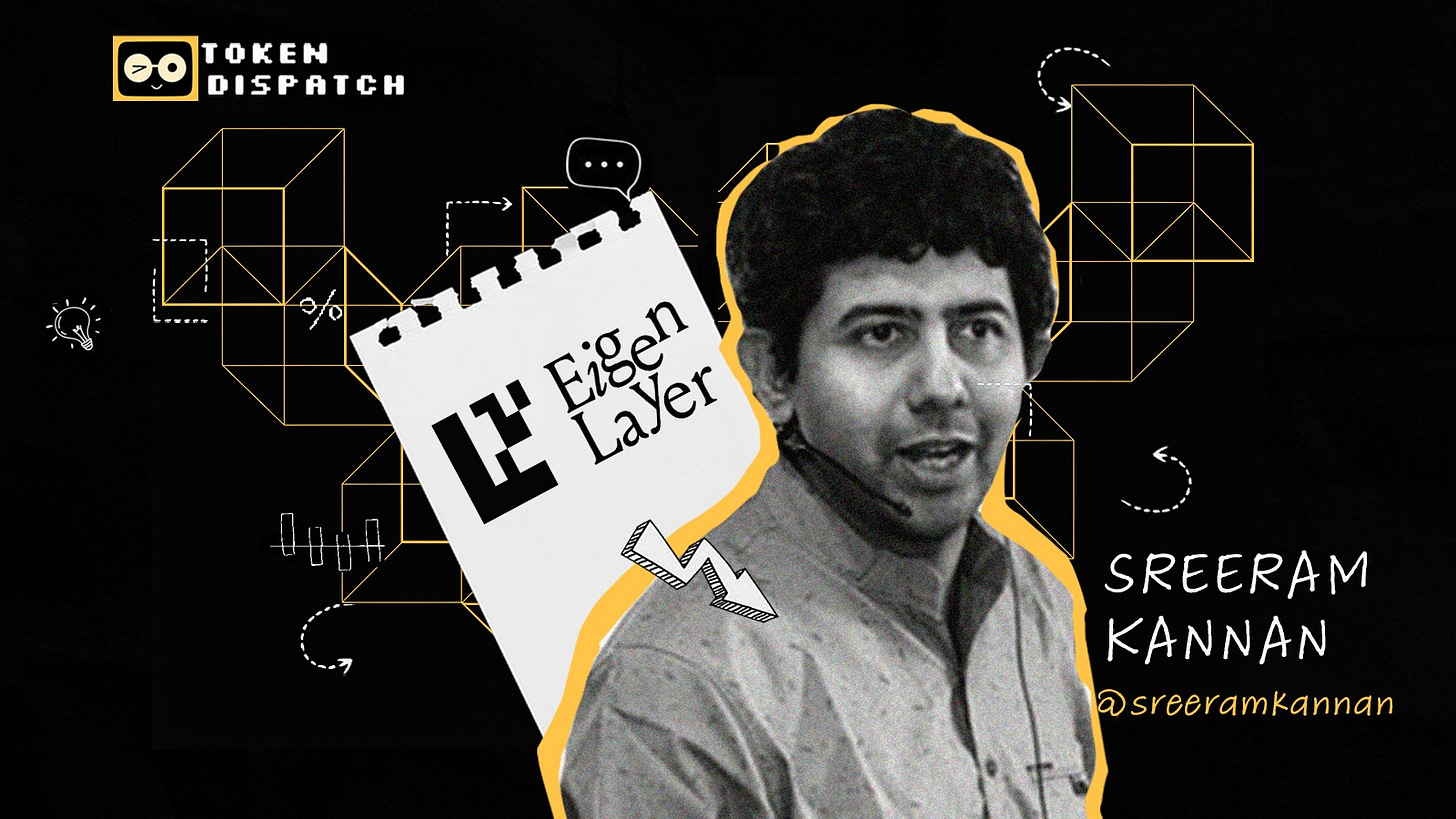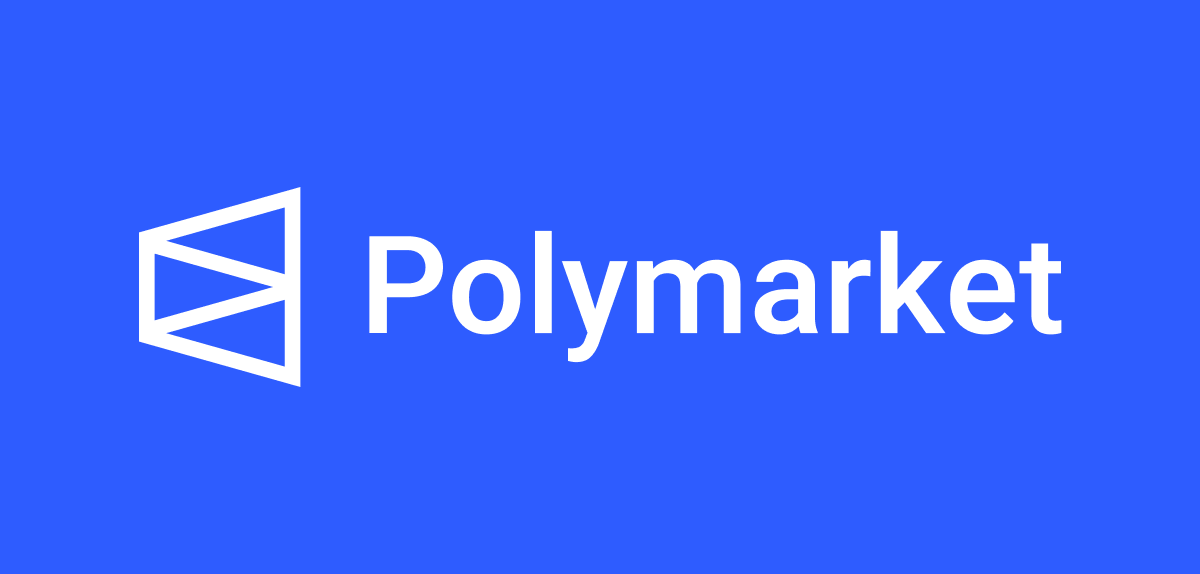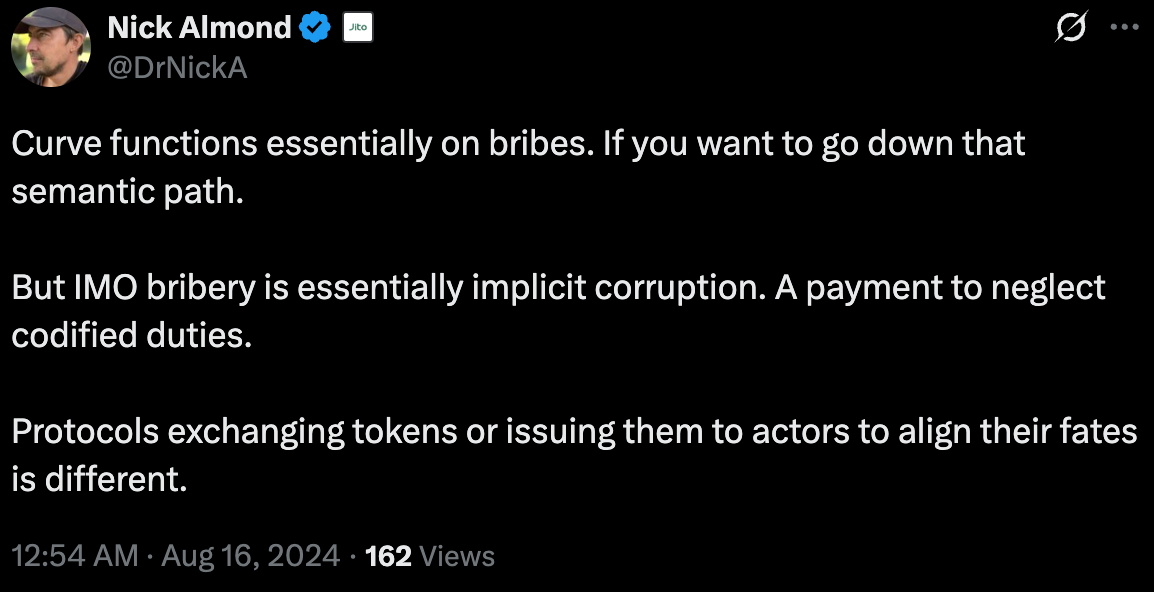Sreeram Kannan: Building Ethereum's Trust Layer 🛠️
"Blockchains are the biggest upgrade to human civilisation since the US Constitution."
The Caltech interviewer leaned forward with an intriguing question.
“Suppose I give you infinite resources, infinite talent, and 30 years. You lock yourself away in a lab like a hermit. After 30 years, you come out and tell me what you have invented. What would you create?”
Kannan, then a postdoctoral researcher applying for faculty positions, sat stunned. His mind went blank. The question demanded unconstrained thinking on a scale he’d never attempted. He’d spent years solving problems in computational genomics, building on what he already knew, taking incremental steps forward. This question had no constraints. No budget limits. No time pressure. No talent shortage.
Just one requirement: What would you build if nothing stood in your way?
“I was completely baffled by the scope of this question,” Kannan recalls. The degree of freedom terrified him. He didn’t get the Caltech job. But the question planted a seed that later grew into EigenLayer, one of Ethereum’s most debated innovations.
However, the journey from that Caltech interview room to running a crypto company worth billions required Kannan to answer that 30-year question three separate times, changing his answer with each new stage.
Polymarket: Where Your Predictions Carry Weight.
Bet on the future by trading shares in outcomes, elections, sports, markets, you name it. Polymarket turns collective wisdom into real-time probabilities.
Now merged with X, predictions integrated with live social insights from Grok & X posts.
Think you know what’s coming next? Prove it.
👉 Explore Polymarket
Kannan grew up in Chennai, southern India, where pure mathematics captured his imagination early. He stayed in India for his undergraduate degree at the College of Engineering, Guindy, where he worked on ANUSAT, India’s first student-designed microsatellite. The project gave him a taste for complex systems and coordination problems.
In 2008, he moved to the United States with just $40 in his pocket. He pursued telecommunications at the Indian Institute of Science in Bangalore, then went on to earn both a master’s in mathematics and a Ph.D. in electrical and computer engineering at the University of Illinois at Urbana-Champaign.
His doctoral work focused on network information theory which is essentially, how information flows through networks of nodes. He spent six years solving long-standing open problems in the field. When he finally cracked them, twenty people in his subfield took notice. Nobody else did.
The disappointment led to a reckoning. He’d optimised for curiosity and intellectual beauty, not impact. You can’t expect real-world change as a random byproduct if you’re not deliberately pursuing it.
He drew a two-axis graph. Technical depth on the X-axis. Impact on the Y-axis. His work sat firmly in the high-depth, low-impact quadrant. It was time to move on.
In 2012, he attended a talk on synthetic genomics by Craig Venter, one of the founders of the Human Genome Project. The field was inventing new species. Talking about making biological robots rather than mechanical ones. Why waste time optimising download speeds when you could be reprogramming life itself?
He switched completely. Computational genomics became his new focus during postdoctoral work at Berkeley and Stanford. He worked on DNA sequencing algorithms, building mathematical models to understand genetic structures.
Then artificial intelligence blindsided him. One of his students proposed using AI to solve the DNA sequencing problem. Kannan rejected it. Surely a neural network couldn’t outperform his carefully crafted mathematical models. The student built it anyway. Two weeks later, the AI demolished Kannan’s best benchmarks.
The message was that within a decade, AI would replace all his mathematical algorithms. Everything he’d built his career on would become obsolete.
He faced a choice to go deeper into AI-driven biology or try something new. He chose new.
From Buffalo to Earth
The Caltech question kept bothering him. Not because he’d failed to answer it, but because he’d never thought that way before. Most people work incrementally. You have X capabilities. You try to build X plus delta. Small improvements on what already exists.
The 30-year question demanded something different. It required imagining a destination without worrying about the path.
After joining the University of Washington as an assistant professor in 2014, Kannan formulated his first 30-year project: decode how information is stored in living systems. He assembled collaborators. Made progress. Everything seemed on track.
Then in 2017, his PhD advisor called with news about Bitcoin. It had throughput and latency problems which is exactly what Kannan had studied during his doctorate.
His initial reaction? Why would he abandon genomics for “random speculative BS”?
The technical fit was clear, but it seemed so far removed from his grand vision. Then he reread Yuval Noah Harari’s “Sapiens.” One idea stuck: Humans aren’t special because we innovate or because we’re intelligent. We’re special because we can coordinate at scale.
Coordination requires trust. The internet connected billions of people but left a gap. It gave us the ability to communicate instantly across continents, yet it provided no mechanism to ensure people would keep their word. Email could deliver a promise in milliseconds, but enforcing that promise still required lawyers, contracts, and centralised institutions.
Blockchains filled that gap. They were more than databases or digital currencies. They were enforcement engines that turned commitments into code. For the first time, strangers could make binding agreements without asking permission from banks, governments, or platforms. The code itself held people accountable.
This became his new 30-year thesis: to build humanity’s coordination engine.
But here, Kannan learned something that many academics often miss. Having a 30-year vision doesn’t mean you can jump straight to year 30. You have to earn the leverage to work on bigger problems.
Moving Earth requires a million times more energy than moving a buffalo. If you want to eventually move Earth, you can’t just announce that ambition and expect resources. You have to move a buffalo first according to Kannan. Then maybe a car. Then a building. Then a city. Each success gives you more leverage for the next challenge.
The world is designed this way for good reason. Give someone who’s never moved a buffalo the power to move Earth, and the whole thing might explode. Progressive leverage protects against catastrophic failure.
Kannan’s first attempt to move a buffalo was Trifecta. A high-throughput blockchain he built with two other professors. They pitched a blockchain running at 100,000 transactions per second. Nobody funded it.
Why? Nobody needed it. The team had optimised for technology without understanding market incentives or identifying clear customers. They’d hired people who all thought the same way — PhDs solving theoretical problems.
Trifecta failed. Kannan went back to academics and research.
Then he tried again with an NFT marketplace called Arctics. He was an advisor to Dapper Labs, which ran NBA Top Shot. The NFT space seemed promising. But as he built the marketplace, he kept running into infrastructure problems. How do you get a reliable price oracle for NFTs? How do you bridge NFTs between chains? How do you run different execution environments?
The marketplace failed too. He didn’t understand how NFT traders thought. If you’re not your own customer, you can’t build products that make sense.
Each problem required the same thing: a trust network.
Should he build an oracle? A bridge? Or should he build the meta thing that solves all these problems — the trust network itself?
That he understood. He was exactly the type of person who would build an oracle or a bridge. He could be his own customer.
In July 2021, Kannan founded Eigen Labs. The name came from the German word meaning “your own.” Anybody can build whatever they want. The core thesis is open innovation through shared security.
The technical innovation was “restaking.” Ethereum validators lock up ETH to secure the network. What if they could use those same assets to secure other protocols simultaneously? Instead of every new blockchain or service building its own security from scratch, they could borrow Ethereum’s established validator set.
Kannan pitched the idea to a16z five times before they funded him. One early pitch was memorable for the wrong reason. Kannan wanted to build on Cardano because it had $80 billion in market cap but no functioning smart contracts. The a16z partners took the call from outside a Solana conference. Their response: This is interesting. Why the hell are you on Cardano?
The feedback forced Kannan to think about focus. Startups are exponential games. You want to translate linear work into exponential impact. If you think you have three exponential ideas, you probably have none. You need to pick the one with the highest exponent and pour all your energy into it.
He refocused on Ethereum. The decision proved to be the right one. By 2023, EigenLayer had raised over $100 million from firms including Andreessen Horowitz. The protocol launched in stages, reaching $20 billion in total value locked at its peak.
Developers began building “actively validated services” (AVSs) on top of EigenLayer, everything from data availability layers to AI inference networks. Each could tap into Ethereum’s security pool without bootstrapping validators from scratch.

Success, however, brought scrutiny. In April 2024, EigenLayer announced its EIGEN token distribution, and a backlash followed.
The airdrop locked tokens for several months, preventing recipients from selling. Geographic restrictions excluded users in the United States, Canada, China, and other jurisdictions. Many early participants who’d deposited billions felt the distribution favoured insiders over community members.
The reaction caught Kannan off guard. The protocol saw a $351 million plunge in total value locked as users withdrew funds in protest. The controversy exposed a gap between Kannan’s academic mindset and the expectations of the crypto world.
Then came the conflict of interest scandal. In August 2024, CoinDesk reported that Eigen Labs employees had received nearly $5 million in airdrops from projects building on EigenLayer. Employees collectively claimed hundreds of thousands of tokens from projects like EtherFi, Renzo, and Altlayer. At least one project felt pressured to include employees in their distributions.
The revelation sparked accusations that EigenLayer was compromising its “credibly neutral” position, using influence to reward projects that provided tokens to employees.
Eigen Labs responded by banning ecosystem projects from airdropping to employees and implementing blackout periods. But the damage to its reputation had already been done.
Despite these controversies, EigenLayer continues to operate at the heart of Ethereum’s evolution. The protocol has established partnerships with major players like Google Cloud and Coinbase, who serve as node operators.
Kannan’s vision extends far beyond restaking. “Crypto is our coordination superhighway,” he says. “Blockchains are commitment engines. They allow you to make and keep commitments.”
He thinks in terms of volume, variety, and verifiability. How many commitments can humanity make and keep? How diverse can those commitments be? How easily can we verify them?
“It’s a crazy, 100-year project,” Kannan says. “And it upgrades the human species.”
The protocol launched EigenDA, a data availability system designed to handle the throughput of all blockchains combined. The team introduced intersubjectivity, a governance mechanism for resolving disputes that can’t be verified purely on-chain.
But Kannan acknowledges the work is far from done. “It’s not done unless you can run education on chain, unless you can run healthcare on chain. We’re nowhere near done.”
His approach to building combines top-down vision with bottom-up execution. You need to know where the hill is. But you also need to find gradients that lead there from where you stand today.
“If you can’t do anything today with your long-term vision, then it’s no good either,” he explains.
The verifiable cloud is EigenLayer’s next frontier. Traditional cloud services require trusting Amazon, Google, or Microsoft. Kannan’s version lets anyone run cloud services — storage, computing, AI inference — with cryptographic proof they’re executing correctly. Validators stake money on their honesty. Bad actors lose their stake.
At 40-something, Kannan maintains his position as an affiliate professor at the University of Washington while running Eigen Labs. He still publishes research. Still thinks in terms of information theory and distributed systems.
But he’s no longer just the academic who couldn’t answer Caltech’s 30-year question. He’s answered it three times now - genomics, then blockchains, then coordination engines. Each answer built on lessons from the previous attempt.
The buffalo has been moved. The car is in motion. The building is beginning to shift. Whether he’ll eventually move Earth remains to be seen. But Kannan has figured out something many academics never learn: the path to solving big problems starts with solving small ones, and earning the leverage to go bigger.
That’s it about the EigenLayer guy. See you next week with another profile.
Until then … stay extremely curious,
Thejaswini
Token Dispatch is a daily crypto newsletter handpicked and crafted with love by human bots. If you want to reach out to 200,000+ subscriber community of the Token Dispatch, you can explore the partnership opportunities with us 🙌
📩 Fill out this form to submit your details and book a meeting with us directly.
Disclaimer: This newsletter contains analysis and opinions of the author. Content is for informational purposes only, not financial advice. Trading crypto involves substantial risk - your capital is at risk. Do your own research.








